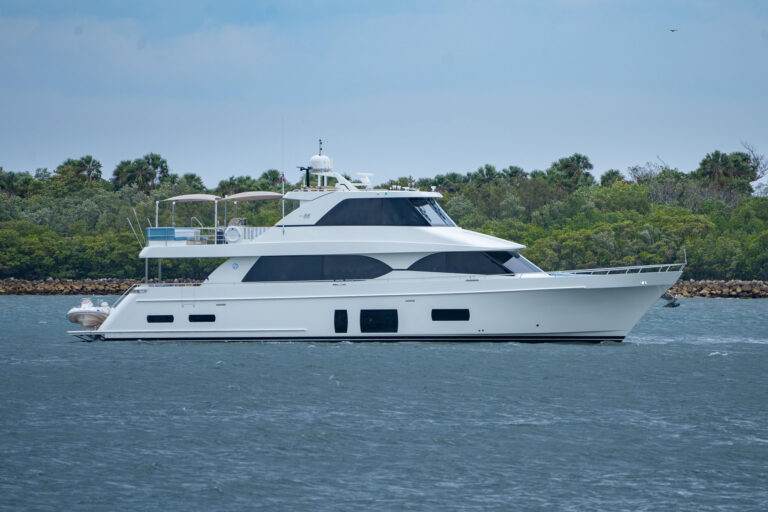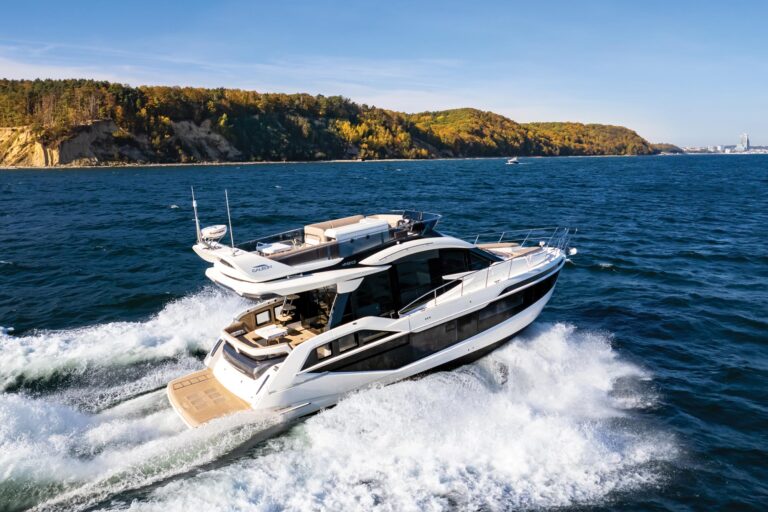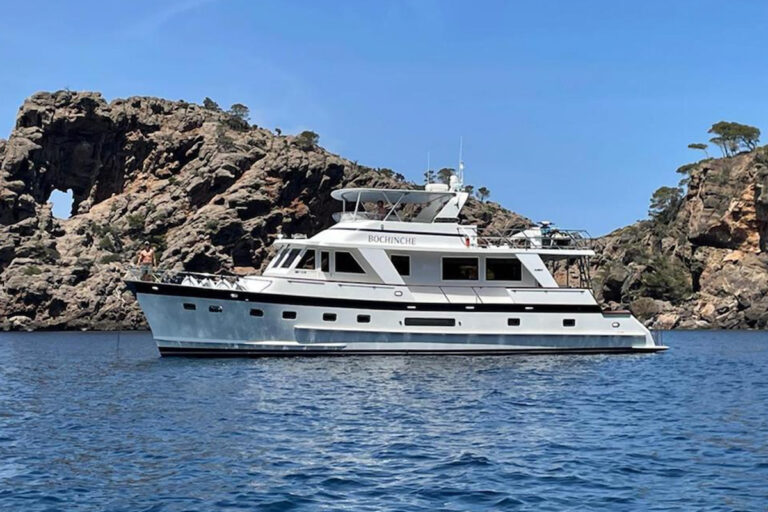Awhile back, a friend of mine bought a 25-year-old, 105-foot classic canoe-stern Feadship and planned an ambitious refit that would update her exterior, install new systems and add a luxurious interior. The project proved sobering. New structural obstacles appeared at every turn, and the yard and project manager excelled only at asking my friend for more money. The last I heard, he had sunk more than a million dollars into the project before giving up. The yacht continues to rust behind a Ft. Lauderdale trailer park.
Unlike my friend, the owner of Koala, the 1966 Burger pictured in these pages, recognized the scope of such a project, and the reasons for taking it on, before buying the grande dame. For years, he had walked past her on the docks in St. Augustine, accepting her occasional seductive wink and admiring her sweet lines and classic pedigree. On the day her second owner’s unfortunate circumstances left Koala available, he quickly became her third.
He originally planned to take her into St. Augustine Marine for minor mechanical and cosmetic upgrades, but as work progressed, the yard discovered additional issues.
“We had complete surveys, but those guys can’t always catch everything”, he said. “So what do you do when you get halfway through with a job and discover a bunch of other things? You go ahead.”
What the yard went ahead with was a stem to stern, 15,000-hour, million-dollar restoration that preserved the grace and integrity of this classic Burger. Such restorations are less common than refits by owners who buy classics and modernize them, often destroying the design’s initial appeal. By contrast, this owner focused on enhancing his classic yacht’s looks, updating her systems and preparing her, as Burger did in 1966, for a lifetime of family cruising.
“I told my wife if we don’t put 200 hours on the engines a year, then we’re going to sell her”, he said.
Koala‘s most notable exterior alteration is the 10-foot cockpit that extends her LOA to 82 feet. It actually accentuates her lines, unlike some extensions completed on yachts of this period bought by owners more interested in duplicating their neighbor’s Euro-style motoryacht than in preserving the classic’s grace. The additional length also negates the need for the original blue sheer stripe, creating a crisper, more pleasing profile.
St. Augustine Marine eliminated one of the water tanks and added another 2,000 gallons of diesel under the cockpit sole, bringing Koala‘s fuel capacity to 4,000 gallons.
“Today, with good watermakers, you don’t need all that water tankage anyway”, the owner said.
During the extension phase, it made sense to give Koala fresh Awlgrip. Over the years, countless layers of paint were applied to her aluminum hull and superstructure. The yard recommended stripping her down to the bare plating. In a testament to Burger’s construction methods, they found nothing underneath. Her hull was in fine shape, and except for some rust on the water tanks, Koala was rust-free. Craftsmen complemented the fresh paint job with glowing brightwork and newly chromed hardware.
Her teak decks did not fare as well as her hull, hardly unusual considering the boat’s age. Instead of replacing the teak, the yard removed all of it, save the portion on the afterdeck. They replaced the teak with glassed-over plywood painted with a nonslip coating.
“I like teak. It looks good, feels good on the feet”, the owner said. “But the non-skid is easy to clean and looks fine.”
Koala‘s Caterpillar 3412 diesels will certainly hold up to the cruising task. The previous owner installed the big V-12s, part of the third repowering in the boat’s history. She originally had a pair of GM diesels, replaced by a pair of Detroits that had only 1,600 engine hours when they were removed in favor of the Cats.
It appears the previous owner was on a quest for speed. The Cats can push Koala over 20 knots, but her new owner likes cruising at 16 to 18 knots, sipping a miserly 40 gph combined.
“People are crazy”, he said. “They spend all that money for maybe a few more knots and spend most of their time at the fuel dock.”
One of the most difficult procedures in restoring an older boat is simply tracing the bundles of unused wiring from older equipment. Ward’s Marine of Ft. Lauderdale did the electrical survey and consultation on Koala, and the more they looked, the more problems they discovered. In the end, they installed a new electrical panel and replaced all the 24- and 110-volt wiring. Two new 20kW generators supply ship’s power.
Koala‘s interior refit was a little less ambitious. Recognizing that her layout suited their plans to cruise with children and grandchildren, the owner and his wife decided not to move any bulkheads or make drastic interior changes. The focus was on brightening the lower deck, freshening the fabrics throughout the boat and updating appliances and fixtures.
The interior, which is luxurious yet informal, was crafted with the understanding that family boating involves a little sand, wet bathing suits, some fish guts and the occasional flying piece of pasta.
Bulkheads are painted in the master stateroom, which also has beach house-style shutters over the ports instead of curtains. The two guest staterooms and crew quarters received the same treatment. The dining saloon has a neutral-colored sole covering, wicker chairs with a floral fabric, beautifully crafted teak shutters and new a dining table. The galley includes new appliances.
Work on the afterdeck was slightly more extensive. St. Augustine Marine removed the bulkhead-mounted cabinets and bar and replaced them with more functional fiberglass units with Corian counters, an ice maker and a freezer. Henry Burger certainly would have approved of the exquisitely crafted teak high-low table. Tropical fabrics cover the settee, and new wicker furniture invites guests to plop down for a slice or two of key lime pie.
Including her purchase price, Koala cost her owner and his wife about $2 million, a little more than they originally intended for a project that “just kind of happened.
It is a reasonable investment, considering her pedigree and knowing she meets their needs as a good family cruising boat. Some yachtsmen of a more practical nature might argue it would make more sense to buy a new, albeit smaller, build for a similar price, but then again, they likely would have dismissed Koala as an old hag from the start.
As her owner said, “you can’t look at it that way.”









